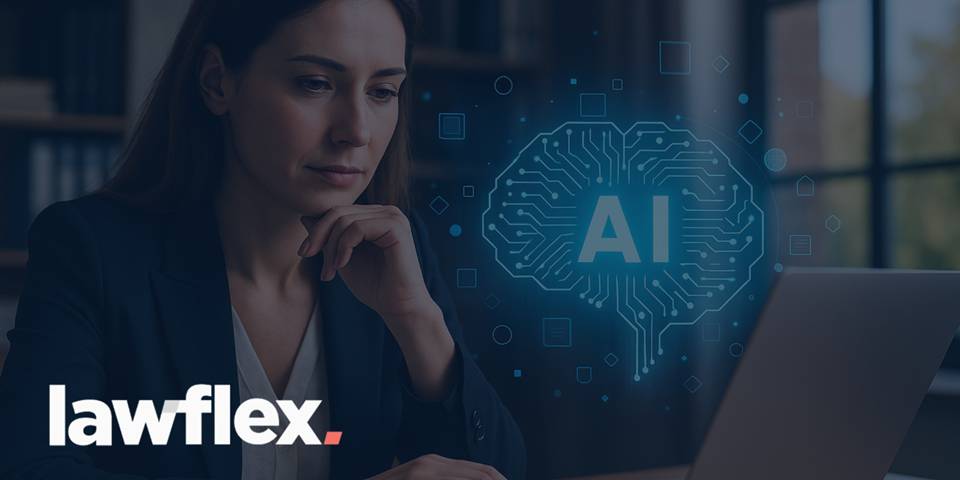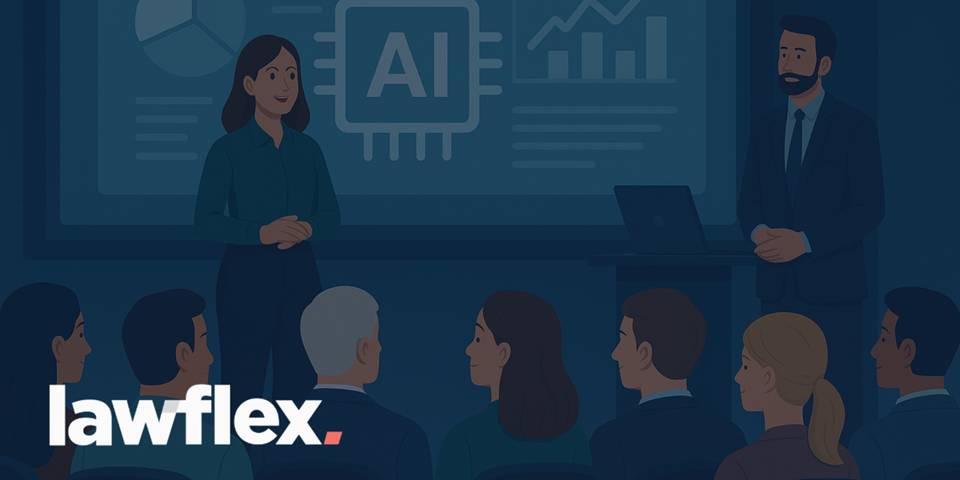Why Legal AI Adoption Often Falls Flat
With the potential to revolutionize everything from contract review to compliance monitoring, artificial intelligence has emerged as one of the most talked-about subjects in the legal sector. However, the sad truth behind the hype is that the majority of legal AI projects never progress beyond the pilot stage.
In an attempt to increase productivity immediately, legal departments invest in advanced platforms and technologies; however, they often face sluggish adoption, inaccurate data, and ambiguous metrics. The outcome? Expensive pilot projects that rarely produce quantifiable results but appear impressive in presentations. The problem is not that AI is ineffective. It’s because AI initiatives in the legal sector frequently begin without a clear objective, a well-defined process, or the necessary knowledge to oversee execution. Even the best tools can turn into digital shelfware in the absence of structure and support.
This pattern is seen in LawFlex across numerous fields and jurisdictions. As an Alternative Legal Service Provider (ALSP) with a Tier 1 Chambers ranking, we have assisted legal teams in converting prototypes into scalable programs by guiding them from curiosity to consistency. Adoption of true legal AI necessitates a strategy that integrates people, process, and purpose in addition to technology.
Start With a Use Case That Matters
Most successful AI projects originate with a business challenge rather than a product showcase. Legal teams that observe tangible outcomes pinpoint areas where technology can improve quality control, eliminate tedious manual labor, or minimize bottlenecks.
For instance, by grouping related documents, spotting important trends, and highlighting irregularities across jurisdictions, AI can significantly cut down on the amount of time needed on multilingual e-discovery. To guarantee prompt, reliable handling, it can also automate first-level contract evaluation or triage incoming compliance warnings.
These kinds of targeted, high-impact use cases are frequently the beginning for LawFlex’s clients. In one case, an AI-powered LawFlex review team processed more than 400,000 documents for a regulatory probe on behalf of a multinational financial services company. The business cut the number of hours spent on manual reviews by over 40% by combining machine learning with human quality checks.Applying AI where it is most useful is what leads to that kind of advancement, not embracing it for its own sake.
Why ALSPs Like LawFlex Make AI Work
Technology is insufficient on its own. When combined with the appropriate knowledge and a scalable operational framework, AI can be beneficial. ALSPs are now essential partners in this regard. LawFlex bridges the gap between concept and execution by combining cutting-edge technology with human intelligence. Working directly within client processes, our teams of carefully screened attorneys, project managers, and legal technologists make sure every AI deployment is suited to real-world requirements rather than just theoretical possibilities.
LawFlex incorporates flexible resourcing right into the process, in contrast to internal pilots, which frequently stall because of capacity constraints or reluctance to change. Our attorneys are taught to work together with AI tools, decipher insights from machines, and instantly verify results. Faster, more accurate, and consistently compliant hybrid solutions are produced by combining talent and technology, outperforming traditional review approaches.
Because of this partnership model, legal teams can grow effectively without having to hire more staff on a long-term basis. LawFlex becomes an extension of the client’s legal ecosystem when accuracy and speed are crucial, assisting businesses in meeting demands without compromising quality.
What Legal Teams Can Learn from Early Adopters
For legal departments exploring automation or intelligent review, three lessons stand out from successful implementations:
- Start small and scale Begin with one workflow where AI can make an immediate difference, such as document classification or due diligence review.
- Integrate people and process from day AI should support the team, not replace it. Training and workflow alignment are just as vital as choosing the right tool.
- Measure the right outcomes. Track metrics such as turnaround time, consistency, and adoption rates, not just cost Long-term efficiency depends on usability and trust.
LawFlex’s experience shows that AI doesn’t eliminate the human element; it enhances it. When combined with skilled professionals, AI turns into a force multiplier that improves decision-making, reduces fatigue, and boosts consistency across global operations.
The Future of Legal AI: From Experiment to Expectation
“Should we try this?” is giving way to “How do we make it work at scale?” in discussions on legal AI. Instead of experimenting, corporate legal departments and law firms are integrating AI into the core of their legal workflow. The need for efficiency and openness will only increase as data volumes increase and laws get more intricate. Instead of being innovative, AI-powered review, predictive analytics, and compliance monitoring will become commonplace.
But technology will never replace human judgment. The most successful organizations will be those that balance automation with expertise, ensuring every insight generated by AI is interpreted through the lens of legal experience. That’s where LawFlex is leading. By combining flexible resourcing, global talent, and technology-driven solutions, we help clients move beyond pilots and into sustained transformation.
Why LawFlex Is Built for What Comes Next
With more than 2,500 vetted lawyers across 50 jurisdictions, LawFlex provides scalable legal solutions that adapt to the evolving landscape. From AI-assisted e-discovery to managed review and compliance projects, we design every engagement to blend human precision with machine efficiency.
Ranked Tier 1 globally by Chambers & Partners, LawFlex has redefined what legal outsourcing can achieve. Our approach isn’t about replacing teams—it’s about empowering them. By turning technology into practical outcomes, we help clients stay ahead of change, control costs, and deliver legal services faster than ever before.
Legal AI adoption is no longer about hype. It’s about execution—and execution is where LawFlex excels.



